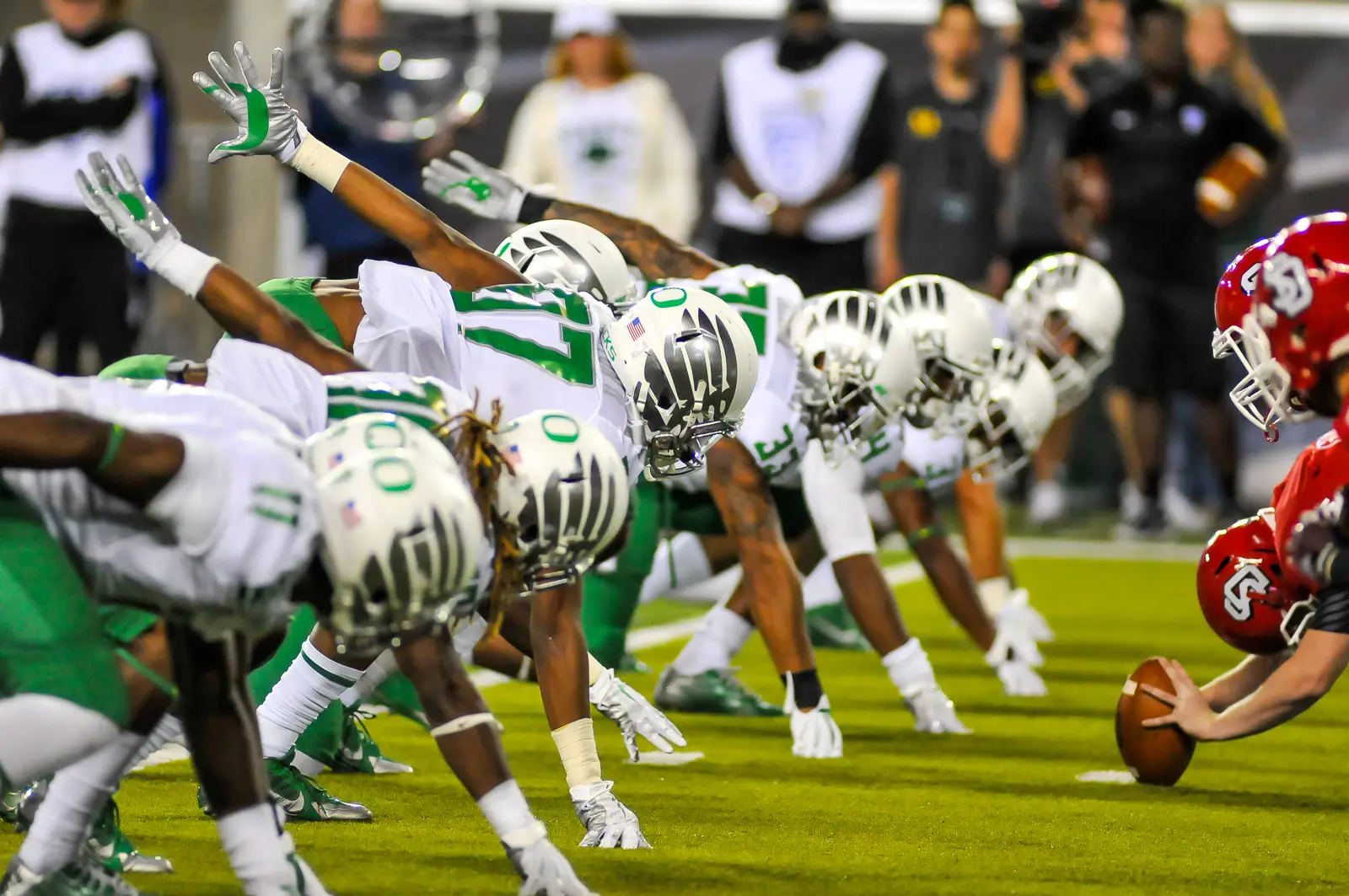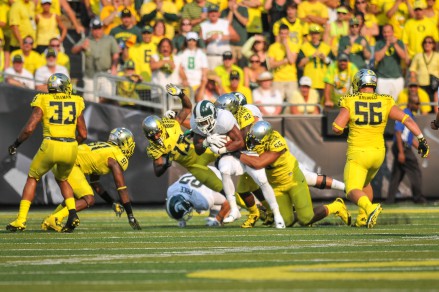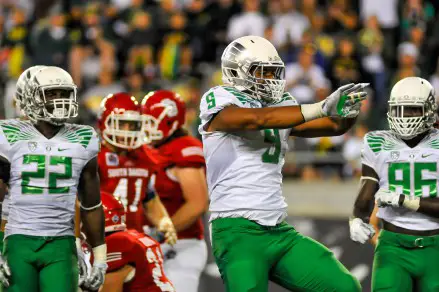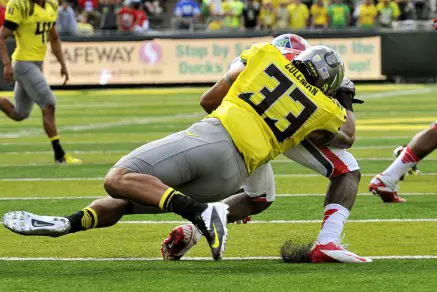Having a Heisman-hopeful, such as quarterback Marcus Mariota, is always exciting for a team. However, the timeless saying “Defense wins Championships” has been proven correct time and time again. With that being said, the Duck defense — which is arguably the best it has been since the departure of Defensive Coordinator Nick Alliotti — is possibly what could finally land the No. 2 Ducks in the NCG this year.
In the past several years, the Ducks’ offense has been the story of each game by scoring so many points that the defense doesn’t have to do much in order to secure the victory. However, especially in the latter parts of a season and on into bowl games, the Ducks’ defense has been a main contributor to any losses sustained (See Stanford/Arizona 2013).
The Oregon defense has especially struggled in the past with stopping the run game of other teams with dominant running backs and solid offensive lines. In last year’s contest, Stanford ran up 274 of their total 377 yards on the ground and averaged 4.2 yards per carry.
In the Arizona game, the Ducks allowed Kadeem Carrey to have the highlight-reel performance of his career with 206 rushing yards and four TDs on his own, while allowing 304 total rushing yards against.
The Ducks have had this problem due to the defense usually being significantly smaller-sized than other opponents. While speed has never been an issue for the Ducks, tackling and the individual size of defensive players have. But this year the Ducks have been able to maintain their speed while increasing their size in order to be more effective against other teams’ running games — which could be the key difference maker in the Ducks’ ability to be invited to the “Final Four.”
The most notable improvement for the Ducks is on the defensive line. The DL is led by 6′ 8″, 280 lb. star defensive end Arik Armstead, who is arguably the best player on the entire defense.
Armstead is joined on the defensive line by 6′ 7″, 290 lb DeForest Buckner; 6’4″, 310 lb Alex Balducci; 6’5″, 285 lb Tui Talia; and 6’6″, 270 lb T.J. Daniel. This increase in overall body size for the Oregon defensive line has made them more effective against opposing offensive lines and running backs.
This is huge for the Ducks!!
This year’s returning linebackers include Derrick Malone Jr., Tony Washington, Joe Walker, Rodney Hardrick, and Tyson Coleman. All of these Ducks’ returning linebackers have also increased in size, while maintaining their effective speed. With the defensive line playing at top-notch levels, they can push the opposing offensive line backwards, which makes the linebackers more capable of making plays at or behind the line of scrimmage. This inherently forces more and more second- or third-down-and-long situations, which is exactly what the Ducks want to make opposing teams face.
Thus far, in the 2014 season, the Ducks have averaged only 150 rushing yards allowed through three games. This has directly impacted the Ducks’ ability to force turnovers.
For example, Oregon’s defense only allowed 123 total rushing yards from the No. 7 Michigan State Spartans a few weeks ago. With the Spartans’ run game being effectively contained, the Ducks forced Spartan quarterback Connor Cook to make desperate down field throws – which ended up in interception opportunities for the Ducks. Along with allowing an average of only 150 rushing yards per game, the Ducks have averaged two turnovers per game with four total interceptions and two forced fumbles.
Effectively stopping the run is also crucial for the Ducks, because running the ball efficiently is most opposing team’s game plan to attempt to win. When the opposing team’s running game is productive, the game slows down and the opposing team can keep the Ducks’ high-power offense on the sidelines for longer periods of time. Many coaches believe the best, and only way, to stop the Ducks’ offense is to try to keep them off of the field by maintaining possession and milking the game clock. Momentum is a huge aspect of the Oregon offense, and in order to maintain it, the defense must stop the run in order to give the offense as much time with the ball as possible.
Defense will be key for the Ducks this weekend against the Washington State Cougars, who are ranked second in the FBS behind the Ducks for the highest percentage of plays longer than 10 yards (29.3%). Stopping the run will be crucial this week in order to make the Cougars uncomfortable on their own field. Although the Ducks offense will most likely dominate the Cougars defense, this weekend will still be a test for the Ducks’ defense, who are looking to assert themselves as a national force to be reckoned with.
Related Articles:
Chip Kelly Update: Everything's Good Again ...
Chip Kelly Update: Wailing and Gnashing of Teeth
Shock and Awe -- The Oregon Ducks' Football Hangover Effect
Despite Lopsided Score, Georgia State "Never Stopped Believing"
Hope Springs Eternal for Ducks
Incompetent Pac-12 Officials: How Do You Miss ALL of THIS?
Rob Liggins is a senior at the University of Oregon, where he plans to graduate from in the spring of 2015. Rob is majoring in Journalism and Advertising, as well as receiving a minor in Business. Rob grew up in Beaverton, OR and competed in football, basketball, and track & field at the varsity level for Beaverton High School.




